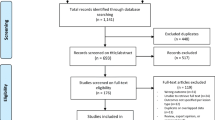Abstract
Solar lentigines are common pigmentary lesions. Q-switched lasers are effective treatment options but postinflammatory hyperpigmentation (PIH) is common in darker skin. The objective of the study is to compare the efficacy and safety in solar lentigines of Asian skin treated by Q-switched potassium titanyl phosphate (KTP) 532-nm nanosecond laser vs. KTP 532-nm picosecond laser for the treatment of solar lentigines in Asians. Thirty patients with at least 2 solar lentigines on the upper extremities were enrolled. A total of 30 paired lentiginous lesions were randomly treated with a single treatment of either Q-switched KTP 532-nm nanosecond laser vs. KTP 532-nm picosecond laser. In terms of efficacy, mean luminance score was evaluated at baseline, at 6th, and 12th week. Degree of pigment clearance was assessed by a blinded physician and the patients. Satisfaction score was rated by patients using visual analogue scale. Adverse events were also recorded. Twenty-eight patients completed the study. Both lasers showed significant improvement in mean luminance score from baseline (p < 0.05). Likewise, there was no significant difference in pigment clearance between two lasers either assessed by physician or patients. However, patients’ satisfaction score was significantly higher with the picosecond laser (p = 0.014). Adverse events and pain were not different between groups. Q-switched KTP 532-nm nanosecond laser and KTP 532-nm picosecond laser are safe and effective for treating solar lentigines in Asians. Based on cost-effectiveness, Q-switched KTP 532-nm nanosecond laser remains the main treatment while KTP 532-nm picosecond laser can be considered as a treatment option.





Similar content being viewed by others
References
Ortonne JP (1990) Pigmentary changes of the ageing skin. Br J Dermatol 122(Suppl 35):21–28
Vachiramon V, Panmanee W, Techapichetvanich T, Chanprapaph K (2016) Comparison of Q-switched Nd: YAG laser and fractional carbon dioxide laser for the treatment of solar lentigines in Asians. Lasers Surg Med 48:354–359. https://doi.org/10.1002/lsm.22472
Ortonne JP, Pandya AG, Lui H, Hexsel D (2006) Treatment of solar lentigines. J Am Acad Dermatol 54:S262–S271. https://doi.org/10.1016/j.jaad.2005.12.043.
Bogdan Allemann I, Goldberg DJ (2011) Benign pigmented lesions. Curr Probl Dermatol 42:81–96. https://doi.org/10.1159/000328267
Wang CC, Sue YM, Yang CH, Chen CK (2006) A comparison of Q-switched alexandrite laser and intense pulsed light for the treatment of freckles and lentigines in Asian persons: a randomized, physician-blinded, split-face comparative trial. J Am Acad Dermatol 54:804–810. https://doi.org/10.1016/j.jaad.2006.01.012
Ross V, Naseef G, Lin G, Kelly M, Michaud N, Flotte TJ, Raythen J, Anderson RR (1998) Comparison of responses of tattoos to picosecond and nanosecond Q-switched neodymium: YAG lasers. Arch Dermatol 134:167–171
Levin MK, Ng E, Bae YS, Brauer JA, Geronemus RG (2016) Treatment of pigmentary disorders in patients with skin of color with a novel 755 nm picosecond, Q-switched ruby, and Q-switched Nd:YAG nanosecond lasers: a retrospective photographic review. Lasers Surg Med 48:181–187. https://doi.org/10.1002/lsm.22454
Guss L, Goldman MP, Wu DC (2017) Picosecond 532 nm neodymium-doped yttrium aluminium garnet laser for the treatment of solar Lentigines in darker skin types: safety and efficacy. Dermatol Surg 43:456–459. https://doi.org/10.1097/dss.0000000000000922
Negishi K, Akita H, Matsunaga Y (2018) Prospective study of removing solar lentigines in Asians using a novel dual-wavelength and dual-pulse width picosecond laser. Lasers Surg Med. https://doi.org/10.1002/lsm.22820
Yoshimura K, Harii K, Aoyama T, Iga T (2000) Experience with a strong bleaching treatment for skin hyperpigmentation in Orientals. Plast Reconstr Surg 105:1097–1108 discussion 1109-1010
Todd MM, Rallis TM, Gerwels JW, Hata TR (2000) A comparison of 3 lasers and liquid nitrogen in the treatment of solar lentigines: a randomized, controlled, comparative trial. Arch Dermatol 136:841–846
Li YT, Yang KC (1999) Comparison of the frequency-doubled Q-switched Nd:YAG laser and 35% trichloroacetic acid for the treatment of face lentigines. Dermatol Surg 25:202–204
Negishi K, Akita H, Tanaka S, Yokoyama Y, Wakamatsu S, Matsunaga K (2013) Comparative study of treatment efficacy and the incidence of post-inflammatory hyperpigmentation with different degrees of irradiation using two different quality-switched lasers for removing solar lentigines on Asian skin. J Eur Acad Dermatol Venereol 27:307–312. https://doi.org/10.1111/j.1468-3083.2011.04385.x
Izikson L, Farinelli W, Sakamoto F, Tannous Z, Anderson RR (2010) Safety and effectiveness of black tattoo clearance in a pig model after a single treatment with a novel 758 nm 500 picosecond laser: a pilot study. Lasers Surg Med 42:640–646. https://doi.org/10.1002/lsm.20942
Forbat E, Al-Niaimi F (2016) The use of picosecond lasers beyond tattoos. J Cosmet Laser Ther 18:345–347. https://doi.org/10.1080/14764172.2016.1188209
Author information
Authors and Affiliations
Corresponding author
Ethics declarations
The study was approved by the Mahidol University Institutional Review Board of Human Rights Related to Research Involving Human Subjects, Mahidol University (Protocol number 086006). The study protocol complied with the guidelines of the declaration of Helsinki. Information on the study procedures, benefits, and potential side effects were given to the patients before enrolling the study. Written informed consent was obtained from each patient before study initiation
Role of the sponsors
None.
Conflict on interest
The authors declare that they have no conflict of interest.
Rights and permissions
About this article
Cite this article
Vachiramon, V., Iamsumang, W. & Triyangkulsri, K. Q-switched double frequency Nd:YAG 532-nm nanosecond laser vs. double frequency Nd:YAG 532-nm picosecond laser for the treatment of solar lentigines in Asians. Lasers Med Sci 33, 1941–1947 (2018). https://doi.org/10.1007/s10103-018-2560-3
Received:
Accepted:
Published:
Issue Date:
DOI: https://doi.org/10.1007/s10103-018-2560-3




